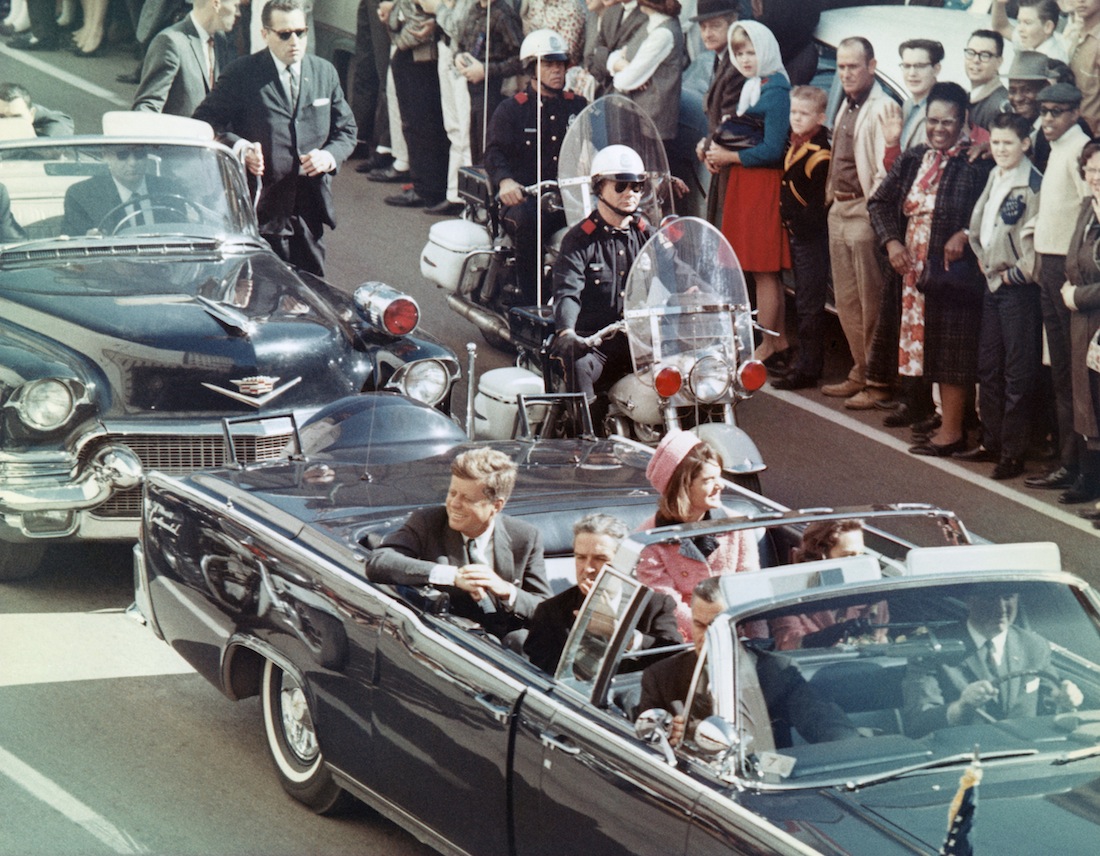Did Clear Weather Play a Role in JFK's Assassination?

This article was provided by AccuWeather.com.
It has now been 50 years since the 35th president of the United States, John Fitzgerald Kennedy, was assassinated in Dallas. While riding in a topless car in a motorcade on Nov. 22, 1963, he was shot and killed by a sniper. An investigative team, the Warren Commission, determined the shooter was Lee Harvey Oswald, though Oswald was shot and killed by Jack Ruby before he could stand trial.
For decades, controversy and suspicion have swirled around the actual details of that day, with many conspiracy theorists and renowned historians alike believing that Oswald did not act alone, or may even have been used as an innocent scapegoat.
With an abundance of theories and contradicting information surrounding some details of this tragically historic day, some information is more concrete. The weather of the day has been carefully recorded, and may have played a role in how the event transpired.
RELATED How Weather Impacted the Bloodiest Battle of the Civil War Weather History Video Channel AccuWeather Severe Weather Center
Dr. Michael L. Kurtz, scholar-in-residence in the Department of History and Political Science at Southeastern Louisiana University, testified at the Assassination Records Review Board and authored books such as "Crime of the Century: The Kennedy Assassination From a Historian's Perspective" and "The JFK Assassination Debates: Lone Gunman Versus Conspiracy."
He told AccuWeather.com that video and photographic evidence points to what the conditions may have been at the time the President was shot, 12:30 p.m. CST. A sign on the roof of the Texas School Book Depository listed the temperature as 67 F, and video shows trees and people's hair blowing to suggest a light breeze, which Kurtz estimated to be about 10 to 15 mph. It had rained in the morning, but once the precipitation stopped, the skies cleared.
Sign up for the Live Science daily newsletter now
Get the world’s most fascinating discoveries delivered straight to your inbox.
AccuWeather.com Senior Vice President and Director of Forensics Dr. Joe Sobel confirmed Kurtz's estimates. The climatology reports for Love Field Airport at 1 p.m. CST that day had a high of 67 F with 15 to 20 mph winds.
"It had rained until about 10 a.m.," Sobel said. "It hadn't been an overly hard rain, but enough to form puddles. But, as the sun came out, conditions dried up."
Reports state that in the morning, Kennedy's vehicle had its "bubble top" on, a plexiglass cover that acted as a clear roof.
"I would guess that, had the rain continued, and the bubble top remained on the limousine, whoever fired the actual shots could not possibly have struck JFK, except through an extraordinarily lucky shot," Kurtz said.
Weather can play a large role in a criminal investigation. Rainy conditions can have the potential to contaminate evidence. For example, Kurtz stated that since the conditions had cleared, there were likely no adverse weather effects on the investigation that followed Kennedy's murder.
While the clear weather on that fateful day may have eased the investigation, it may have played a role in providing the opportunity for the crime in the first place.
© AccuWeather.com. All rights reserved. More from AccuWeather.com.









